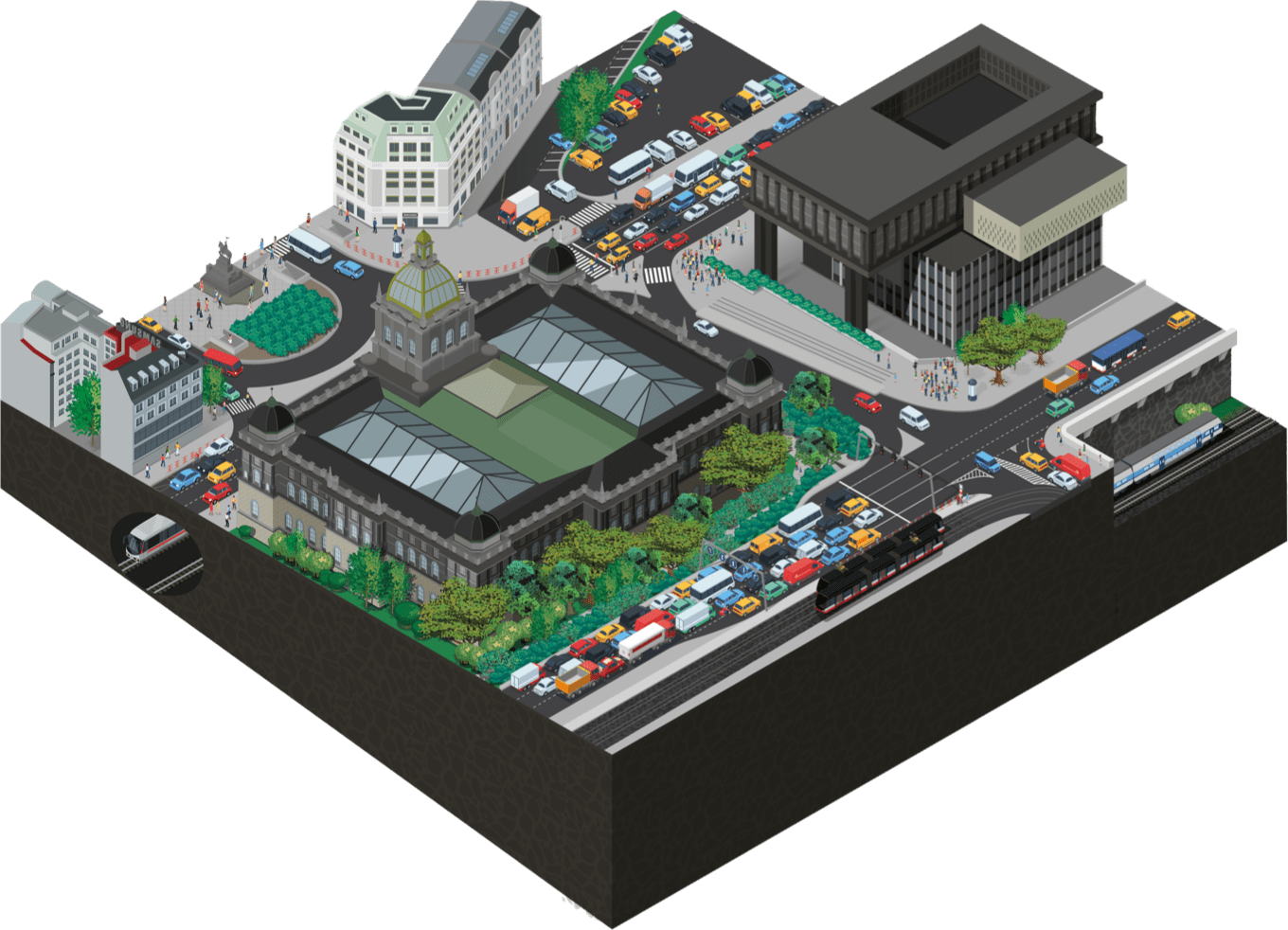We are resolving transportation comprehensively as a whole
We do not isolate the individual types of transportation for one another, but use the strengths of each of them. Because each part of the city is specific. It may be better to take a car to catch a train, while it is better to get to the centre by metro or on a bike.

Goals of the Mobility Plan
The goal of the Mobility Plan is to ensure the transportation of inhabitants and the transport of goods so that all methods of movement through the city work in harmony. So that they do not needlessly impede each other, but are primarily governed by the needs of the people who live in and around the city, while also improving the quality of life in Prague and its environs. The pollution of the atmosphere by combustion motors, the high degree of noise and even the stress when waiting in traffic jams has a considerable effect on public health.
Principles of transportation policy
- Preferring public transportation and the development of rail transportation
- Connecting public transportation with other types of transportation
- Decreasing sensitivity and alleviating capacity problems in transportation networks
- New connections for various types of transportation
- Support of transport by walking and cycling
- Optimisation of supplying of city
- Improving the accessibility of transportation, transportation infrastructure and public spaces for various groups of inhabitants
- Improving the quality of public spaces
- Decreasing atmospheric pollution, noise pollution and the carbon footprint
- Decreasing spatial demands on transportation
- Decreasing traffic accidents
- Financial sustainability of the transportation system
- Procedural support of sustainable mobility and effective city administration
- Sustainable regional development of Prague metropolitan area
- Economic development of city







